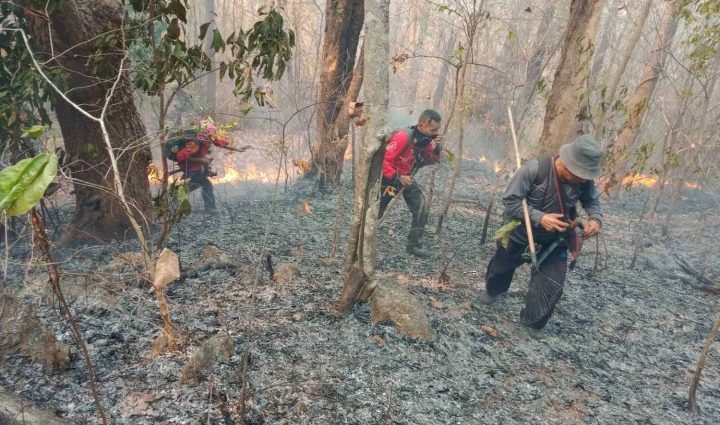PUBLISHED : 2 Apr 2024 at 11:15

Red-coded levels of PM2.5 dust had increased and expanded from the North into parts of the Central Plain and the Northeast, with the worst levels in Chiang Mai, on Tuesday morning.
The Geo-Informatics and Space Technology Development Agency (Gistda) reported at 9am on Tuesday that 21 provinces faced red (seriously harmful) levels of particulate matter 2.5 micrometres and less in diameter (PM2.5). They ranged from 75.4 to 213.4 microgrammes per cubic metre of air over the past 24 hours. The government-set safe threshold is 37.5µg/m³.
The worst level, 213.4µg/m³, was measured in the northern tourist province of Chiang Mai, followed by 204.6 in Mae Hong Son, 203.3 in Chiang Rai, 180.4 in Nan, 174.0 in Lamphun, 173.9 in Phayao, 155.0 in Lampang, 136.0 in Phrae, 118.3 in Uttaradit, 107.0 in Nakhon Phanom, 105.6 in Tak, 101.2 in Loei, 98.2 in Sukhothai, 94.1 in Udon Thani, 93.4 in Sakon Nakhon, 93.1 in Nong Khai, 90.9 in Bueng Kan, 88.9 in Kalasin, 87.4 in Nong Bua Lam Phu, 81.8 in Mukdahan and 75.4 in Phitsanulok.
Orange (initially unsafe) levels of PM2.5 were detected in 20 other provinces. Readings ranged from 37.9 to 74.7µg/m³.
The provinces were, in a descending order, Khon Kaen, Kamphaeng Phet, Maha Sarakham, Phetchabun, Amnat Charoen, Roi Et, Chaiyaphum, Yasothon, Udon Thani, Phichit, Kanchanaburi, Si Sa Ket, Surin, Buri Ram, Nakhon Ratchasima, Uthai Thani, Nakhon Sawan, Phetchaburi, Samut Songkhram and Ratchaburi.
Provinces in the lower Central Plain, the lower Northeast, the East and the South had moderate and good air quality. The southern tourist province of Phuket had the best air quality with 13.1µg/m³, followed by Rayong with 15.8µg/m³.
The intensity and areas of red-coded PM2.5 levels escalated from Monday’s condition.

The map from Gistda shows different levels of PM2.5 in colours on Tuesday morning.

